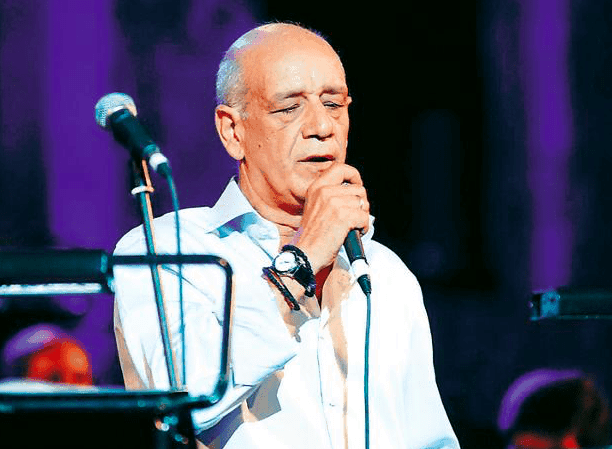Dimitrios Mitropanos is one of Greece's most legendary and loved musicians. He was born on April 2nd, 1948, in the city of Trikala in northwest Thessaly, where he lived until the age of 16. He began his incredible music career in 196.

Mitropanos worked with some of the best-known Greek composers, such as Mikis Theodorakis, Stavros Xarhakos, Madra Mandicencio, Manos Hadtzidakis, Marios Tokas, and Thanos Mikroutsikos, and was one of the top performers of Greek popular music for over four decades.

Mitropanos was known to be a heavy smoker, which some say is evident from the way his voice progressively changed over the course of his career.
From an early age, Mitropanos worked summers to help his family financially. First, he was a waiter in his uncle’s restaurant, and later, he cut ribbons at a woodworking shop. After the third grade of junior high, in 1964, he went to Athens to live with his uncle. Before finishing high school, he began working as a singer.
At the same age, he visited Columbia after the encouragement of Grigoris Bithikotsis, whom he met at a gathering of his uncle’s company, where he sang. There, Takis Lampropoulos introduced him το Giorgos Zampetas, with whom he would work alongside at “Ksimeromata.” Dimitris Mitropanos considers Giorgos Zampetas a great teacher and a second father to himself. As stated, “Zambetas is the only man in music who helped me without expecting anything. All my other colleagues got something and gave me something. "
In 1967, Mitropanos recorded his first album with the song “Thessaloniki.” This followed the recording of “Chameni Paschalia,” which was censored by the Greek military junta and thus never released.
In the course mapped out on the street of folk art songs, 1972 is a milestone. The composer Dimos Moutsis and the lyricist and poet Manos Eleftheriou released “Agios Fevrouarios” with Mitropanos and Petris Salpeas as the song’s performers, marking a milestone in Greek music. In July 1999, Mitropanos and Moutsis will meet again on stage at the “Odeon” with Dimitra Galani and the soprano Julia Souglakou for two nights at the Athens Festival. The concerts were recorded live and released in a double CD two months later. George Katsaros’s “The Road to Cythera” and Giorgos Hatzinasios’s “Ta Sinaxaria” follow suit, projects of high quality with a high profile in Greek society.
In a long career in the Greek music industry, Dimitris Mitropanos collaborated with leading artists of the Laïko and Éntekhno music. Giorgos Zampetas, Mikis Theodorakis, Dimos Moutsis, Apostolos Kaldaras, Takis Mousafiris, Christos Nikolopoulos (“Pare Apofaseis” with lyrics by Lefteris Papadopoulos), Yannis Spanos were composers with whom Mitropanos collaborated, building a career intertwined with the Laïko tradition, until the late 1980s.
In 2010, Mitropanos performed a North American Tour for the first time in over 10 years since his last visit to the United States. During his tour, he performed a concert on July 1, 2010, at Radio City Music Hall in front of a near-capacity crowd. He performed many of his famous songs that were written in the earlier stages of his career as well more recent songs that continue to be popular among Greeks, such as “Ρόζα,” “Πάντα γελαστοί,” Tα Λαδαδικα,” and many more. Mitropanos concluded his concert with a passionate performance of his famous song “Αλίμονο,” with all in attendance giving him a standing ovation as he walked off the stage.
He sadly passed away on April 17, 2012, after suffering from a heart attack and pulmonary edema. He will always be remembered as one of Greece's most recognisable voices and legend of the rebetika genre.

